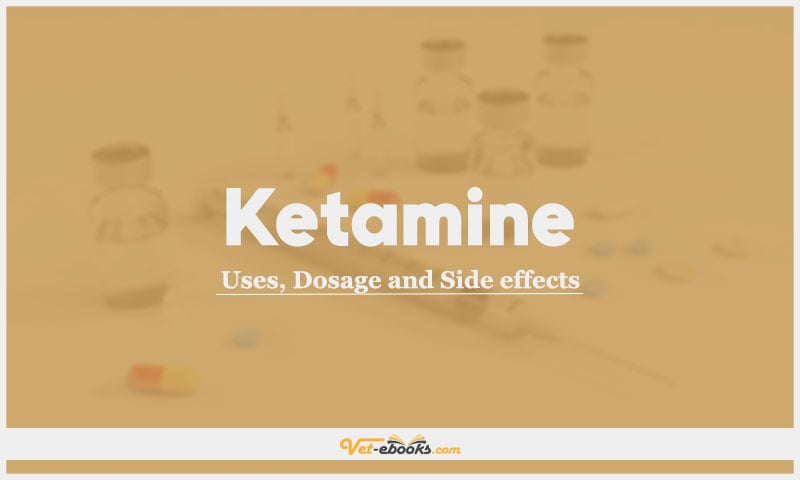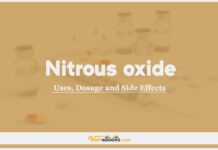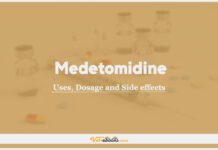Ketamine In Dogs & Cats: Uses, Dosage and Side Effects

Overview
- It antagonises glutamate at N-methyl-d-aspartate (NMDA) receptors in the CNS.
- It interacts complexly with opioid receptors and antagonises mu receptors.
- It is exhibiting agonist activity at the delta and kappa receptors.
- It has no effect on GABA receptors.
Uses of Ketamine
- Provision of chemical restraint or dissociative anaesthesia.
- Ketamine may also provide profound visceral and somatic analgesia and inhibits central sensitization via NMDA receptor blockade.
- Used to provide perioperative analgesia as an adjunctive agent, although optimal doses for analgesia have not been determined.
Dose of Ketamine in Dogs and Cats
Dogs:
- Perioperative analgesia:
- Intraoperatively: 10 μg (micrograms)/kg/min.
- Postoperatively: 2–5 μg/kg/min.
- Both are preceded by a 250–500 μg/kg loading dose.
- There is some evidence to suggest that a 10 μg/kg/min dose may be too low to provide
adequate analgesia continuously, although other evidence-based dose recommendations are lacking. - Induction of anaesthesia (combined with diazepam or midazolam) as part of a volatile anaesthetic technique: 2 mg/kg i.v.
- Induction of general anaesthesia combined with medetomidine or dexmedetomidine to provide a total injectable combination: ketamine (5–7 mg/kg i.m.) combined with medetomidine (40 μg/kg i.m.) or dexmedetomidine (20 μg/kg i.m.).
Cats:
- General anaesthesia: combinations of ketamine (5–7.5 mg/kg i.m.) combined with medetomidine (80 μg (micrograms)/kg i.m.) or dexmedetomidine (40 μg/kg i.m.) will provide 20–30 min general anaesthesia.
- Reduce the doses of both drugs when given i.v.
- Perioperative analgesia: doses are the same as those for dogs.
Drug Dosage Calculator
You Should Give:
Side Effects of Ketamine in Dogs and Cats
- Cardiovascular depression.
- Arrhythmias may arise in animals with a high sympathetic nervous system tone.
- Tachycardias can also arise after administration of high i.v. doses.
- Respiratory depression may be marked in some animals.
- Ketamine may result in spacey, abnormal behaviour for 1–2 hours during recovery.
- Prolonged administration of ketamine by infusion may result in drug accumulation and
prolonged recovery.
Contraindications of Ketamine in Dogs and Cats
- Not recommended for animals whose eyes are at risk of perforation or who have raised intraocular pressure.
- Not recommended in animals with raised intracranial pressure
Tip
Do You Want To Increase Your Veterinary Knowledge and Practical Skills?
You Can Now Browse and Download +3000 Books For Veterinary Professionals & Students Online.
Download Veterinary Books




















